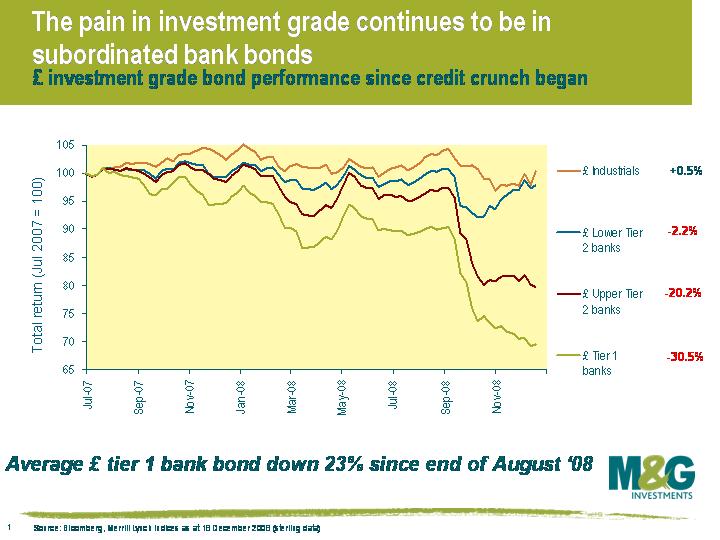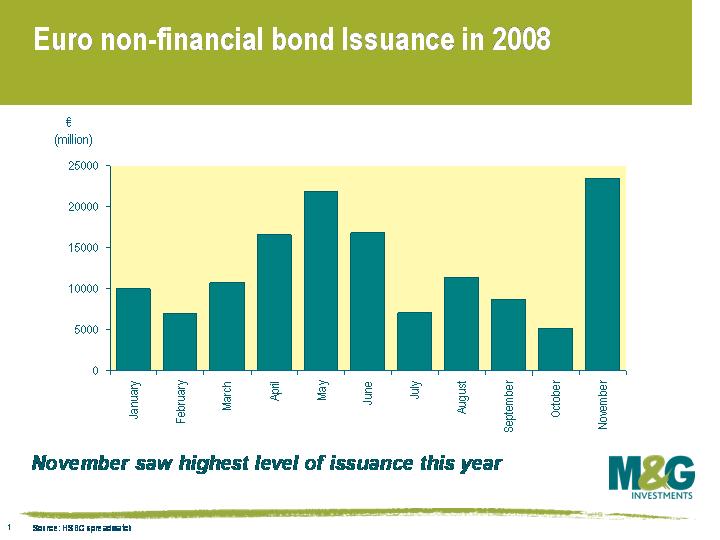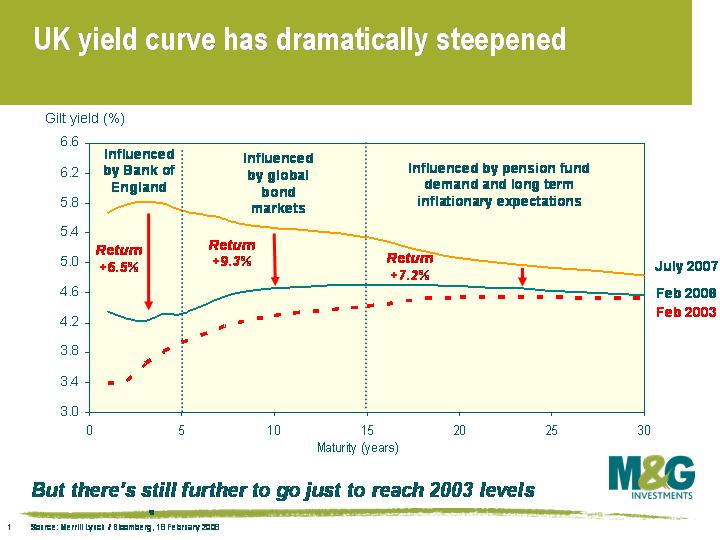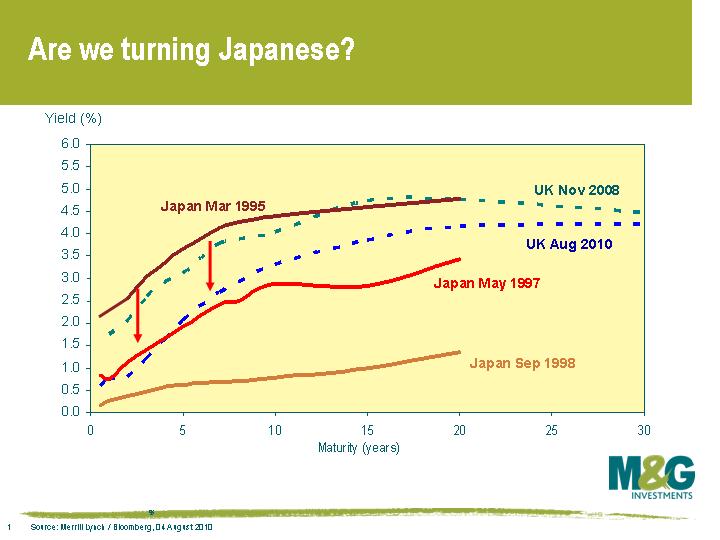Thank you very much for a bumper set of entries to our quiz this year. The answers are shown below – with the spirit of Christmas in our hearts we allowed a small degree of ambiguity on a couple of the questions, but in the end the four people who got 19 out of 20 (and the only one they all got wrong was the impossible question 12) didn’t need any charity. Their names were drawn out of the hat and prizes have been awarded as follows:
The Winner: Nicci Dugdale of Myddleton Croft Investment Managers
Second Prize: Joe Wiggins of Principal Investment
Third Prizes go to both Chris Cowell (also Myddleton Croft) and Simon Bullock (Truestone).
Your prizes will be emailed to you shortly. The winner of the M&G staff competition was Laura Brown with a score of 17 – booze will be on its way to you. Congratulations everybody, and thanks for the entries.
1) Reg Varney, star of On The Buses, achieved what banking “first” in 1967?
He was the first person to take money out of a cash machine, at the world’s first ATM at a branch of Barclays in Enfield.
2) Which brand’s name is derived from a phrase meaning avant-garde techniques?
TAG watches – TAG stands for Techniques Avant-Guarde.
3) Five-oh, young-`uns, Bunk. Which city?
Baltimore – the setting for The Wire TV series. Five-oh means police, young – `uns are the juvenile drug dealers, and Bunk is a detective.
4) What had an “e” added to it in 1967 to prevent a diplomatic incident?
Concorde. The French insisted that the French spelling of the word was used when naming the supersonic aircraft, rather than Concord, and the UK government eventually gave in.
5) Christiano Ronaldo’s fashion brand is linked, by chance, with which (will I get into trouble for saying unfashionable?) London suburb?
Thornton Heath, Croydon. Ronaldo’s fashion brand is CR7, the postcode for this part of Croydon.
6) What was the tallest building in the world at the time of the Wall Street Crash?
The Woolworth Building. According to Selwyn Parker’s book The Great Crash, the Chrysler Building become taller a few days after the days which historians generally agree marks the Wall Street Crash (October 24th, October 28th and October 29th, 1929). Some people suggested it was the Eiffel Tower – we are going with Wikipedia as the definitive source on this one, and not counting glorified telegraph poles.
7) According to M&G Retail’s Head of Institutional Sales, Neil Brown, what is the only sport that actively bans left-handed equipment (I have failed to verify this independently, but it sounds plausible)?
Neil claims the answer is hockey, where there is no such thing as a left handed stick. Most people said polo, and apparently left-handed polo play was banned in 1975, so either answer is allowed.
8) Why did Dr. Pepper have a bad November? What’s the worst that can happen?
Dr. Pepper promised every American a can of the vile liquid if Guns N Roses ever released the long awaited Chinese Democracy album in 2008. The record was finally released in November.
9) Data Screws Uplifted (anag.)
Credit Default Swaps.
10) What is this thing called?
Zakumi. It is the mascot for the World Cup in South Africa, 2010.
11) When would Jim Flaherty wear brand new footwear?
He is the Finance Minister of Canada. It is traditional for the Finance Minister to wear new shoes when delivering the Canadian budget (although respondents report that in his most recent budget Mr. Flaherty has stopped the tradition on the grounds of austerity…).
12) What is the lowest unique positive whole number that somebody will pick to reply to this question (i.e. a number that nobody else answers this question with)?
The lowest unique number was 3.
13) Which Las Vegas band is releasing a Christmas single with Elton John this year?
The Killers.
14) Where is the QE2?
Dubai, UAE – it is becoming a floating hotel.
15) What do the following companies have in common? GE, Exxon Mobil, Johnson & Johnson, Berkshire Hathaway, Toyota.
At time of writing they are the only companies rated AAA by Moodys and S&P. We also accepted the answer that they have been Fortune magazine’s “Most Respected Company of the Year”, although all of the contenders for the prizes got the more bond related answer in any case.
16) Following a mix up, the writer of a nature column in a newspaper is sent to cover a war in Africa. Which novel?
Scoop by Evelyn Waugh
17) Which artist produced this work?
Banksy.
18) According to the Handelsblatt newspaper, Germans like ones with an “X” on them, but shun those with an “S” or a “V”. What?
Euro bank notes – the X tells them that they were issued by the Bundesbank rather than by the central banks of Italy or Spain. Germans who fear the breakup of the Eurozone have been demanding only “X” rated banknotes from their banks.
19) Morrissey, Marr, Joyce, Rourke. But who was the sometime fifth member of The Smiths?
Craig Gannon. He toured with the Smiths in 1986 and played on “Panic” and “Ask” alongside Johnny Marr.
20) What did Liverpool FC attempt to copyright this year, to great protests?
They tried to copyright the Liverbird symbol, but had to back down after protests from Liverpudlians who pointed out that it belonged to the whole city.
Conventional wisdom says that corporate bonds have performed terribly since the credit crunch broke in July 2007. Yes, BBB rated corporate bond spreads are now wider than they were in the Great Depression, but you may be surprised to know that thanks to falling government bond yields, the average industrial investment grade corporate bond has actually generated a positive total return over the past year and a half (‘industrials’ basically means anything that’s not a financial or utility – about a third of the euro investment grade market and a quarter of the sterling investment grade market).
The pain has been in the subordinated financials. We’ve been banging on about subordinated bank bonds for a while now – see Ben’s warning on the eve of the meltdown in September here, Richard’s comment at the beginning of October here, and most recently Jim’s comment on Wednesday re Deutsche Bank here.
 I thought it would be worth updating the chart Ben first used, which demonstrate the massive disparity of returns in the investment grade universe. These two charts show just how spectacular the bank bond blow up has been (data as at end of yesterday, so includes the market’s reaction to Deutsche Bank not calling its LT2 bonds this week). The first chart shows the euro investment grade returns, breaking it down into industrials, Lower Tier 2 bank bonds (the most senior of the subordinated bank bonds), Upper Tier 2 (the next most subordinated) and Tier 1 bank bonds (super subordinated bank bonds). While industrials are up 0.3% since the beginning of July 2007, € Tier 1 (T1) bank bonds are down almost 40%.
I thought it would be worth updating the chart Ben first used, which demonstrate the massive disparity of returns in the investment grade universe. These two charts show just how spectacular the bank bond blow up has been (data as at end of yesterday, so includes the market’s reaction to Deutsche Bank not calling its LT2 bonds this week). The first chart shows the euro investment grade returns, breaking it down into industrials, Lower Tier 2 bank bonds (the most senior of the subordinated bank bonds), Upper Tier 2 (the next most subordinated) and Tier 1 bank bonds (super subordinated bank bonds). While industrials are up 0.3% since the beginning of July 2007, € Tier 1 (T1) bank bonds are down almost 40%.
 As this chart shows, it’s a similar story in the £ market. Industrials are up +0.5%, with T1 bank bonds down just over 30%. The reason that T1 bank bonds have behaved more like equities than bonds is because they ARE more like equities than bonds, usually ranking level with preference shares. A bank can stop paying coupons on T1 whenever it wants (although it can’t then pay dividends to equity holders) and that’s not an event of default – you have no rights to the company’s assets. In fact, although every bond varies, some banks aren’t allowed to pay coupons on T1 if they don’t make certain capital ratios. We have very little of this stuff, and we’d hate to be trying to sell it right now. Liquidity in T1 is poor – looking at a broker run from this morning, the bid-offer spread on Barclays € T1 is 33-37, which is an 11% spread – as a comparison, you’re looking at 92.3-93.5 on a France Telecom € 2015 bond right now, ie a 1.3% spread.
As this chart shows, it’s a similar story in the £ market. Industrials are up +0.5%, with T1 bank bonds down just over 30%. The reason that T1 bank bonds have behaved more like equities than bonds is because they ARE more like equities than bonds, usually ranking level with preference shares. A bank can stop paying coupons on T1 whenever it wants (although it can’t then pay dividends to equity holders) and that’s not an event of default – you have no rights to the company’s assets. In fact, although every bond varies, some banks aren’t allowed to pay coupons on T1 if they don’t make certain capital ratios. We have very little of this stuff, and we’d hate to be trying to sell it right now. Liquidity in T1 is poor – looking at a broker run from this morning, the bid-offer spread on Barclays € T1 is 33-37, which is an 11% spread – as a comparison, you’re looking at 92.3-93.5 on a France Telecom € 2015 bond right now, ie a 1.3% spread.
Finally, a reminder – it’s the last day to enter our XMAS quiz, where we have £175 worth of Amazon vouchers to give away.
Shock of the morning wasn’t the overnight Fed rate cut to zero-ish, nor the acceleration of their Quantitative Easing programme, both of which we’d expected for some time. The shock came with this press release from Deutsche Bank explaining that they wouldn’t be calling a Lower Tier 2 (LT2) bank bond. This particular bond, a Euro 1 billion issue, was issued as a 10 year deal, but with a call date after 5 years at the bank’s option in January 2009. Historically, these LT2 issues have been called after 5 years, as if not redeemed then the coupon steps up and theoretically makes it expensive funding for the bank. In this instance the coupon moves from 3.875%, to 3 month Euribor (Euro money market rate) +88bps. This currently equates to just over 4%, so is only a minor increase in the interest cost at a time when refinancing bank debt has become extremely expensive. Subordinated Deutsche Bank credit default swaps are trading at 216 bps, so it makes total economic sense for the bank to have left this relative cheap financing outstanding – to issue a brand new LT2 bond might cost Deutsche Bank a coupon of 5.5 – 6% . Euribor +88 bps is inside where the bank could issue even senior debt.
So it made economic sense, but the market was still shellshocked. The price of the bond fell from around 96 to 90 as the market opened, and other LT2 bonds are obviously under pressure too. Many had felt that there would be a credibility issue in not calling debt at this part of the capital structure, and that it might impair a bank’s ability to issue cheaply again in the future as well as being seen as a sign of weakness. Now one of the world’s biggest banks has taken such a stance however it is likely that every other bank in the world feels able to assess the callability of their outstanding bonds on purely economic grounds (although BNP Paribas did call a LT2 issue today, perhaps before they knew the precedent that DB was setting). All LT2 bonds should therefore be assessed on a yield to maturity (YTM) basis rather than on yield to call (YTC) – in other words the spreads being offered on bank bonds were unrealistically high if quoted to those shorter call dates.
So LT2 bonds are lower this morning, but a bigger hit is likely in the even more subordinated Tier 1 (T1) market. If banks now feel no moral pressure to call the more senior Lt2 bonds, they will certainly have no compunction about letting T1 bonds extend maturity – to perpetuity if necessary. And coupled with the fact that many T1 bonds will not be able to pay coupons if the bank isn’t paying an equity dividend, many investors are going to be left holding zero coupon perpetual bonds. Bond Maths 101 – the zero coupon perpetual bond is the very worst kind of bond you can own. T1 bonds are 10-12 points lower this morning.
It’s that time again. We invite you to take part in the Bond Vigilantes Christmas Quiz. Please send your entries into us by 5pm on Friday 19 December (email link below). The prize is £100 of Amazon vouchers, with second and third prizes of vouchers for £50 and £25 respectively. The quiz is open to all of our readers, clients or not – although M&G staff members will be playing for a crate of beer rather than the main prizes. The questions are designed to be difficult (and to frustrate googling), and you almost certainly won’t need a full house to win a prize (the average score last year was under 14).
1) Reg Varney, star of On The Buses, achieved what banking “first” in 1967?
2) Which brand’s name is derived from a phrase meaning avant-garde techniques?
3) Five-oh, young-`uns, Bunk. Which city?
4) What had an “e” added to it in 1967 to prevent a diplomatic incident?
5) Christiano Ronaldo’s fashion brand is linked, by chance, with which (will I get into trouble for saying unfashionable?) London suburb?
6) What was the tallest building in the world at the time of the Wall Street Crash?
7) According to M&G Retail’s Head of Institutional Sales, Neil Brown, what is the only sport that actively bans left-handed equipment (I have failed to verify this independently, but it sounds plausible)?
8) Why did Dr. Pepper have a bad November? What’s the worst that can happen?
9) Data Screws Uplifted (anag.)
10) What is this thing called?

11) When would Jim Flaherty wear brand new footwear?
12) What is the lowest unique positive whole number that somebody will pick to reply to this question (i.e. a number that nobody else answers this question with)?
13) Which Las Vegas band is releasing a Christmas single with Elton John this year?
14) Where is the QE2?
15) What do the following companies have in common? GE, Exxon Mobil, Johnson & Johnson, Berkshire Hathaway, Toyota.
16) Following a mix up, the writer of a nature column in a newspaper is sent to cover a war in Africa. Which novel?
17) Which artist produced this work?
.jpg)
18) According to the Handelsblatt newspaper, Germans like ones with an “X” on them, but shun those with an “S” or a “V”. What?
19) Morrissey, Marr, Joyce, Rourke. But who was the sometime fifth member of The Smiths?
20) What did Liverpool FC attempt to copyright this year, to great protests?
Click here to email your entry. Click here to read and print off terms and conditions.
The information we collect from you is used solely to contact you in the event that you have won a prize.
 For all the talk of frozen credit markets, the figures showing new issuance may come as a bit of a surprise to some. November has been the most successful month for new non-financial deals this year (see graph on left). Companies have managed to issue new debt in spite of extreme risk aversion, risk aversion that can be seen in the huge sell off in equities and credit spreads hitting all time wides.
For all the talk of frozen credit markets, the figures showing new issuance may come as a bit of a surprise to some. November has been the most successful month for new non-financial deals this year (see graph on left). Companies have managed to issue new debt in spite of extreme risk aversion, risk aversion that can be seen in the huge sell off in equities and credit spreads hitting all time wides.
One of the main factors behind November’s issuance levels was desperation, and we’ve seen that companies must offer a considerable discount to attract new capital. BMW for example, which is A rated, printed a €750m 5yr deal and had to offer investors a yield that was 6% in excess of 5 year government bonds. (Incidentally we thought this offered good value and bought some for a few of our funds).
What’s been interesting to see is that levels of demand for the new issuance have been very strong, and the prices of the new deals have tended to trend higher in the secondary market – of the 23 substantial issues that were €500m or larger, 21 are trading at tighter spreads. And whilst the majority of paper has come from well regarded, less cyclical sectors such as utilities and telecoms, some less favoured sectors (as the example of BMW showed) have also been able to issue. What was very much a sellers market only 18 months ago is now a very different place – and we’re saying that on a day that the iTraxx Crossover index hit a record high of over 1000 bps, implying default rates of over 50% over the next 5 years in riskier credits.
Deflation fears meant that November was a phenomenal month for government bonds and investment grade corporate bonds. In local currency terms, US Treasuries returned +5.4% (the best month since November 1981), German government bonds returned +4.0% (the best month since at least 1985) and gilts returned +4.6% (the strongest month since October 1992)
Investment grade corporate bonds also performed well. The sharp drop in government bond yields dominated the fact that credit spreads blew out to levels never previously seen (and that includes the Great Depression). US investment grade corporate bonds had the best month since May 1995, European investment grade had the best month since May 2003 and UK investment grade corporate bonds had the best month since May 2005.
I’m doing a teleconference tomorrow at 10am to update on the two main drivers of bond prices – the outlook for interest rates, and the outlook for credit. You can register here if you want to listen in.
Dubbed by many as an economic equivalent to Al Gore’s "An Inconvenient Truth," Patrick Creadon’s 81 minute documentary looks at the spiralling US national debt & the huge implications for the world’s largest economy. The thirty minute version (see here) is well worth the time.
This second episode of historian Niall Ferguson’s series on the story of money and finance, The Ascent of Money, is probably worth a look. It’s apparently going to cover the development and importance of bond markets, and although it includes an interview with a minor US bond fund manager rather than one of your friends at M&G, it will be interesting.
Meanwhile it’s time for a quick competition. I’m reading The Great Crash by Selwyn Parker. Whereas Galbraith’s book of nearly the same name (The Great Crash 1929) covers the stock market’s dramatic fall at the start of the Great Depression, Parker takes the story on to the next few years and covers both the policy errors made by the authorities, and the impact on the people who suffered through unemployment and bank failure. In some ways it makes me feel more optimistic about the current economic meltdown, for although we are unlikely to escape a severe downturn, at least the central bankers and governments now “get it”. We’ve now seen an expansion of the money supply and cut rates (money supply contracted aggressively in the 1930s and rates were slow to fall), fiscal stimulus (in the UK they actually put up taxes in 1930), and while in the 1930s banks were almost encouraged to fail, we are now bailing them out, allowing at least a chance for lending to recover. However, we should remember that the US economy did recover a little by 1930, until the Smoot-Hawley Bill was passed, setting up massive protectionist tariffs to keep foreign goods out of America. At this point the global economy went into freefall, and trade almost ground to a halt – the depression deepened again and lasted for 5 more years. Is there a danger that a Democratic US government, wanting to help the automakers for example, makes the same mistakes as Congress and the Senate made in June 1930?
It’s a fascinating book, but Selwyn Parker will sadly suffer the same fate as J K Galbraith, who complained that he missed out on millions of dollars worth of sales of his greatest work as no airport bookshop would stock it.
Anyway – the competition. The prize is a copy of The Great Crash, and it will go to the first person to email me the name of the US Treasury Secretary at the time of the Wall Street Crash – he’s the one who told the President to “liquidate labour, liquidate stocks, liquidate the farmers, liquidate real estate…”.
I’m sure it won’t have escaped most people’s attention that the big American car makers are suffering at the moment – sales by the big three, GM, Ford and Chrysler were down 23% last month. Both GM and Ford announced last week that they have been spending their cash reserves at a hefty pace, and GM has said that it could run out of operating cash as soon as the end of the year.
This has lead some – including Nancy Pelosi, Speaker of the House of Representatives – to call for a government bailout of the troubled firms funded by the TARP. The Troubled Asset Relief Program was designed to buy distressed assets owned by banks, although over time it has evolved and is more likely to make direct investments in bank equity than to buy asset backed securities. Last night the automakers were turned away from Congress having failed to convince Democratic leaders that they’d spend any aid wisely, but they can come back and plead their case again in December.
As pressure mounts for bailouts of honest blue collar industrial heartland businesses (rather than paying for the bonuses of Ferrari driving Gordon Gekkos) what might that mean for the bonds of the auto makers? These are huge bond issuers – together, Ford and GM have a face value of $125 bn bonds outstanding. This chart shows that as bankruptcy fears have developed the (long dated) bonds have plummeted in price to around 20 cents in the dollar. We’ve been bearish on these car producers since 2004, but is there a risk that whilst in a free market these companies would probably go bust in 2009, in today’s Keynesian borrow and spend world, they could survive, and a government equity injection could bail out not only the blue collar car workers but also the white collar owners of Ford and GM bonds?
So what’s the bull case for buying the automakers at 20 cents? Well, even in the event of a default, a typical recovery might be between 25-30% of the bond value, and the long dated bonds are trading below this historical recovery rate. However in this case recoveries might be lower than history suggests as the liabilities held by bond investors are dwarfed by those held by former employees in pension and healthcare benefits (interestingly GM is the worlds biggest private buyer of Viagra).
Another factor to take into account is where any government cash would sit in the capital structure. There hasn’t been much talk about this thus far but clearly the issuance of common equity or preference shares would be much more attractive to bond holders than a senior secured loan as an equity-like injection would sit below the bonds in the capital structure, and would be further down the queue for repayment in the event of further difficulties.
Ford currently have a bond maturing in Feb ’09 trading at around 85 cents in the dollar which, if they secure government funding, one would assume to be money good. As I said, the team has been bearish on autos for five years but with the bonds trading at these levels, and with continued political pressure on Bush/Obama to do something for the “real” economy they might be looking interesting.
Yesterday it was announced that UK CPI inflation for the month of October was minus 0.2%. The annualised rate of inflation dropped from +5.2% to +4.5%, the biggest year on year drop in UK CPI since April 1992. Inflation expectations have plummeted. The 5 year breakeven inflation rate, i.e. the rate of inflation priced in by the UK index-linked bond market, is now -0.1%. In other words, the UK bond market is saying that RPI inflation (which is the inflation measure that the linker market prices off) is going to average -0.1% per year for the next five years. UK RPI inflation has historically been about 1% higher than UK CPI inflation over the past two decades, although this is likely to change over the next couple of years as the housing cost portion of RPI (which isn’t in CPI) falls. Anyway, you get the picture – deflation is now a very serious risk. And that’s fantastic for good quality bonds, because you’re locking into a fixed rate of interest which could soon be extremely attractive.

Gilts have already enjoyed a strong rally, but how much further has it got to go? I thought it would be worth updating a comment I posted in February (see here). In February, the gilt market had already rallied hard from the previous summer due to the dramatic lowering of interest rate expectations. I argued that there was still further to go just to get to where the yield curve was in 2003 (bear in mind that the UK economy of 2003 was in a much better shape than the UK economy of November 2008). This chart shows where the UK yield curve was in February 2003 and February 2008 relative to where the UK yield curve is today. The front end of the gilt market has sailed through the lows set in 2003, and 5 year gilt yields have today hit another record low (the sixth day in a row that’s been the case, in fact).

It’s time to alter our sights since we’re now through the UK’s 2003 levels – what kind of returns could we be looking at if we go into the ‘Japan’ scenario? Well this chart shows what happened to Japanese government bonds (JGBs) from March 1995 to September 1998, and it’s pretty spectacular. As you can see, the Japanese yield curve of March 1995 looked very similar to the UK yield curve today. JGBs had already had a boom in the first half of the decade, but this continued in earnest from March 1995.
So if the UK (or indeed the whole world) goes into the ‘Japan scenario’, you can expect some terrific returns from good quality bonds. What’s the likelihood of that happening? There are strong arguments that it won’t get that bad. Lessons have been learnt – banks are being saved, and with a few notable exceptions, they’re coming clean with what’s hidden away on their balance sheets. Monetary stimulus and fiscal stimulus were slower to be implemented in Japan. Our economy is (probably) more responsive to monetary stimulus. Japan’s fiscal stimulus wasn’t very effective. Japan’s real estate and stock market bubbles were arguably worse than we’ve experienced. On a trade weighted basis, the Yen was no weaker in 1998 than it was in 1992.
However, there are some arguments that it could even be worse too. Japan struggled through the 1990s at a time when the rest of the world was booming, but the whole world is in trouble this time around. And the Japanese have always had a very high savings rate which enabled the standard of living to remain high through the troubles, while the same certainly can’t be said for the western world today, where many consumers are already technically insolvent. If we do get a bout of deflation, which increases the real value of debt, the effect on the UK consumer will be far greater than the effect on the Japanese consumer.
On balance, while recession is unlikely to last for as long as in Japan, and deflation is unlikely to become so entrenched, every day seems to be bringing us closer to a Japan scenario (for example, while I was typing this sentence it was announced that US CPI fell by a record 1% in October, the biggest monthly drop since records began in 1947). If you believe that there is a sizeable risk of at least a ‘semi’ Japan scenario, which we do, then gilts, other sovereign bonds, and good quality corporate bonds could rally much, much further.
PS If you haven’t heard the song for a while, click here!

















